







 |
||||||
 |
 |
 |
 |
 |
 |
 |
| Part II: Road to Iron
Range National Park |
|
We
got started after dark on the long drive north.
Just after the
long windy road into the tablelands, we spotted our
first herp, a small
active elapid, likely a curl snake (Suta
suta) or a Furina
tristis.
I had brought along a walkie-talkie set, so we could
communicate
between vehicles. The car in the lead would have
to relinquish
the first car position if they hit a herp or missed
one, so it was a
matter of pride to see anything on the road and remain
in the prime
position. We saw another small elapid, same
species as the first,
but after those two sightings, there was not much
activity on the
road. We made good time up the paved road.
After a while the paved road gave way to intermittent dirt road. It was interesting that we would be driving along a section of dirt road, when we would find a short section of paving, only to go back to dirt a km or two later. This was likely done for sections that are prone to flooding to avoid having vehicles caught in sticky mud during the wet, but it was always a bummer when the blacktop ended. Along one section of blacktop, we happened upon a black-headed python, which would have been a huge thrill, aside from the fact it had been recently hit and was on it's way out. What a crappy deal to see my first and only wild blackhead of the trip this way. It was an older individual, based on the size and condition. I could only muster a couple of shots of this heart-breaking scene, none of which are worth posting here. We stopped here and there along the side of the road, or at the intermittent road houses, and invariably found RobRoy out looking for herps. I found this activity inspiring, and followed suit. Along the drive up to Iron Range, we found a Bynoes gecko (Heteronotia binoei), Desert tree frog (Litoria rubella), and several northern dwarf treefrogs (Litoria bicolor) on a large succulent plant with serrated edged leaves. It was nice to see the occasional herps along the way. I was expecting the number of herps on the road to be higher, but the weather was still a little cool. That may have been a good thing, as frequent herps would mean either doubling our drive up to Iron Range, or passing by many herps on the road. |
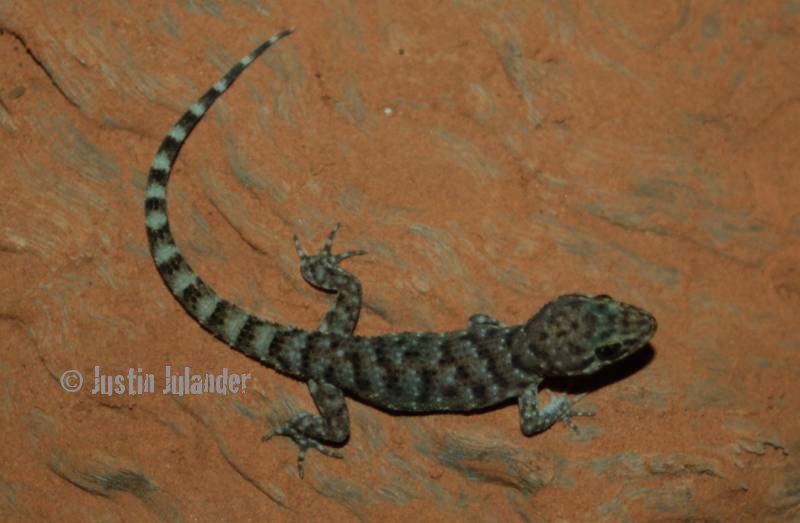 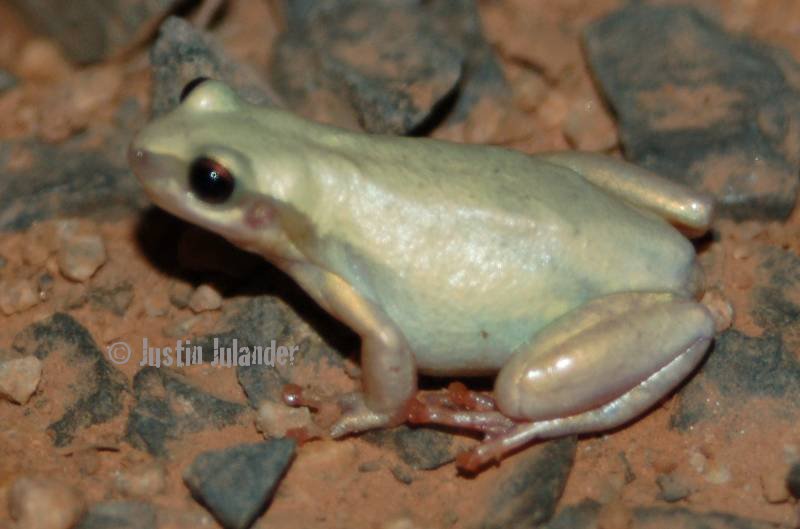 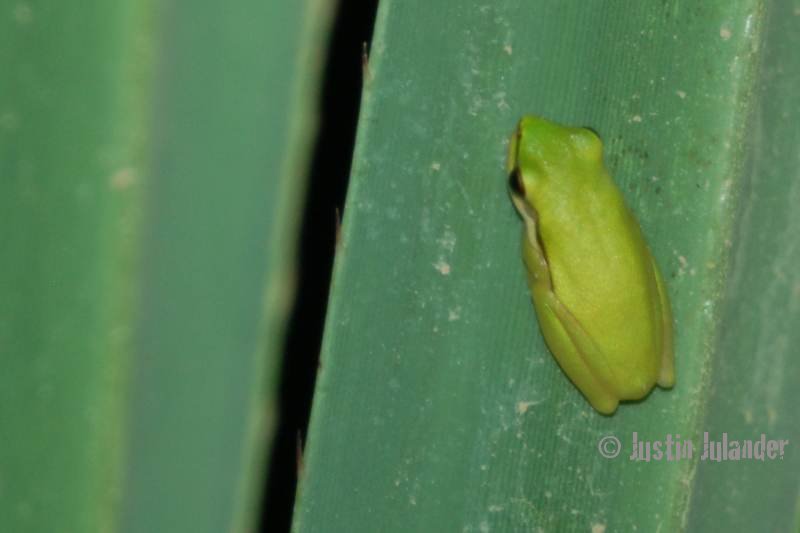 |
|
My
favorite find on the road north was at a stop by a dry
wash. I
found a nice gnarled old tree that was still
standing. I noticed
a gecko skin hanging from one of the cracks in an
overhanging branch of
the tree, which appeared to be a velvet gecko
skin. Sure enough,
in the same crack was a beautiful female northern
velvet gecko (Oedura
castelnaui). The male
was found shortly thereafter. The pair had
beautiful yellow and
orange tails and looked like none of the castelnaui I had
seen
previously. Another unidentified gecko with a
very pale
background color and little noticeable pattern was
also seen higher up
in the tree. It was so great to be able to find
such cool geckos
at roadside stops during the long drive. |
 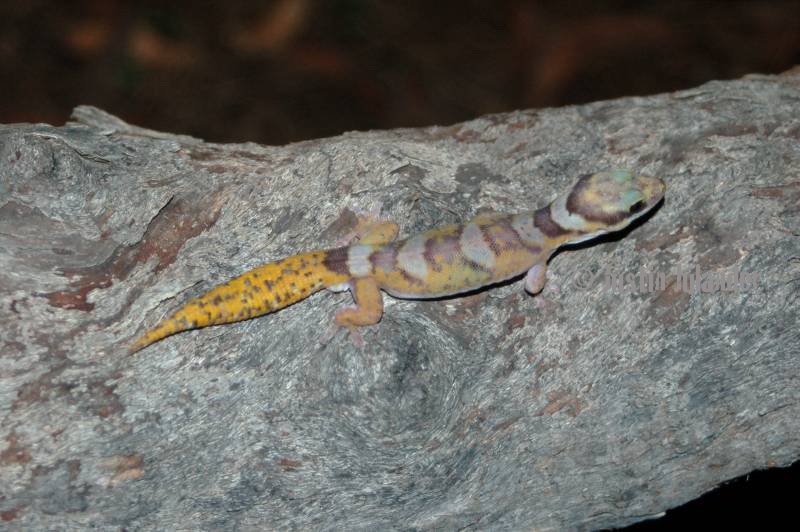 |
|
We
eventually came to the turnoff for Iron Range and
stopped for a
quick break before heading out on the final leg of the
journey.
After a couple crossings of crock infested rivers (as
signs warned us),
the landscape turned from dry forests, to more dense
rainforest
areas. We entered Iron Range and traveled along
the main dirt
track east towards the coast. The park consists
of a couple basic
campgrounds and is close to the Lockheart River
community, an
Aboriginal town that is a bit south of the national
park. Flying
overhead in the early light as we entered the
rainforest were stark
white cockatoos, smaller faster lorikeets, and some
kingfishers.
Other parrots of interest encountered during our stay
in Iron Range
included eclectus parrots and palm cockatoos, both of
which are popular
finds in the park. It was very difficult to get
good shots of the
birds with the lenses I brought, but the target wasn't
parrots, despite
how cool they were. We headed down the dirt track towards our accommodations at Portland Roads, and along the way, "eagle-eye" RobRoy spotted a frilled lizard (Chlamydosaurus kingii) on a tree a bit off the road as we were driving along at 80 km/h. We looked through the forest for the frilled. I spotted him about 7 feet up a medium tree and we all closed in for pictures. He was silvery gray with dark markings and blended in nicely with the dark bark on the tree. He did get a bit agitated and gave us a bit of a show, frilling up nicely for pictures. Another adrenaline pumping find for sure! |
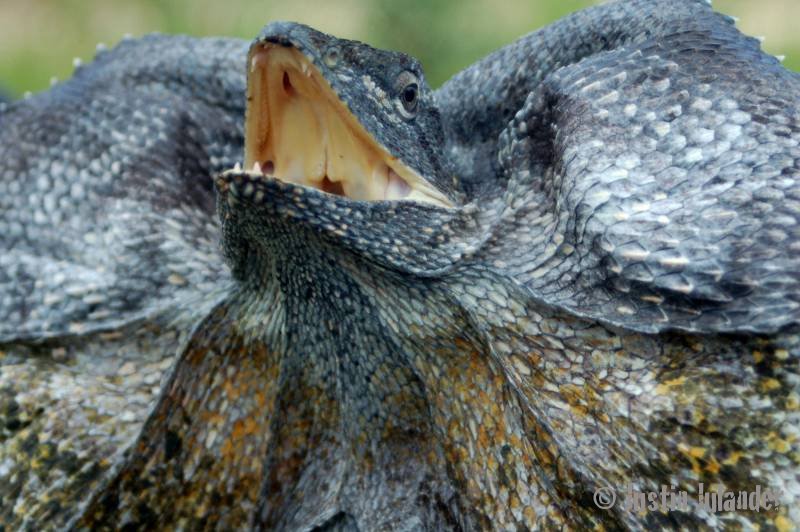 |
|
Next order of business was to
set up our base
camp
at the
comfortable Portland Roads Roadhouse, which is nicely
situated just up
from the beach in a beautiful area just east of Iron
Range. It
was
much nicer than I anticipated staying in and had
plenty of beds, a
kitchen including a fridge, and even a shower
house. Luxury
indeed!
We made our way through the house, each claiming a
spot to sleep and
unpacking our gear from the vehicles. We took a
little look
around, finding a nice green tree snake (Dendrelaphis punctulatus)
in the
tree out front and the neighbors had found a Burtons
snake-lizard (Lialis
burtonis), which was cool to
see. I have always liked the Burtons.
Shortly thereafter,
everyone was
taking a power nap in preparation for the herping
later that
evening. |
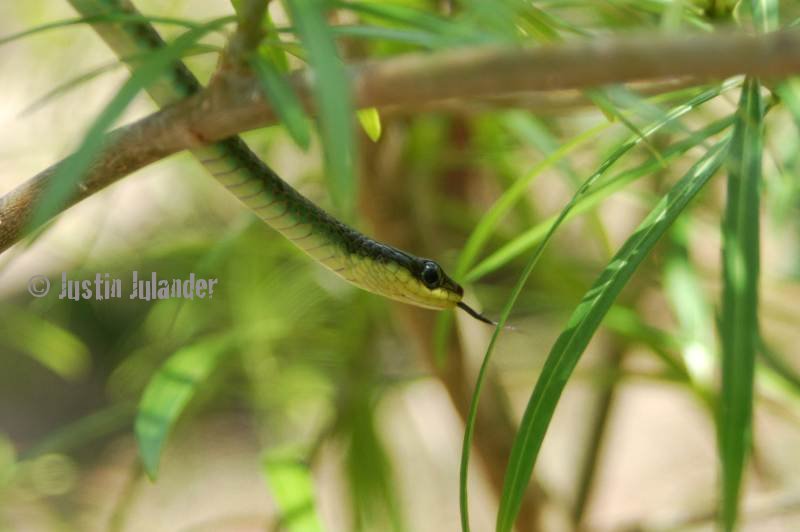 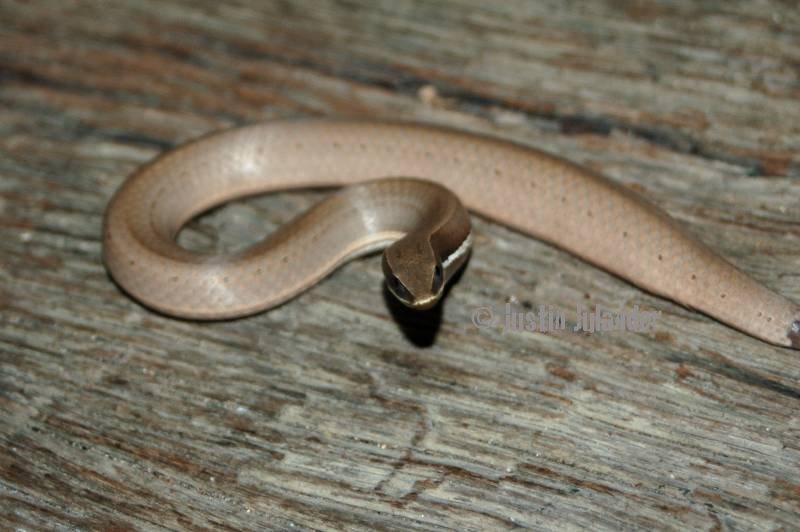 |
|
Nighttime
couldn't come fast enough, but soon we were driving at
dusk
up
the dusty road. We turned off towards Chili
Beach along a section
of road through a eucalypt forest. The first
find of the night
was a beautiful Cape York spotted python (Antaresia maculosa)!
I was
very excited to find one, as this is a species I keep
at home. It
was a very docile snake, never attempting to strike as
we photographed
it in the fading light of the day. What a rush
to find such a
cool little python in it's natural habitat! |
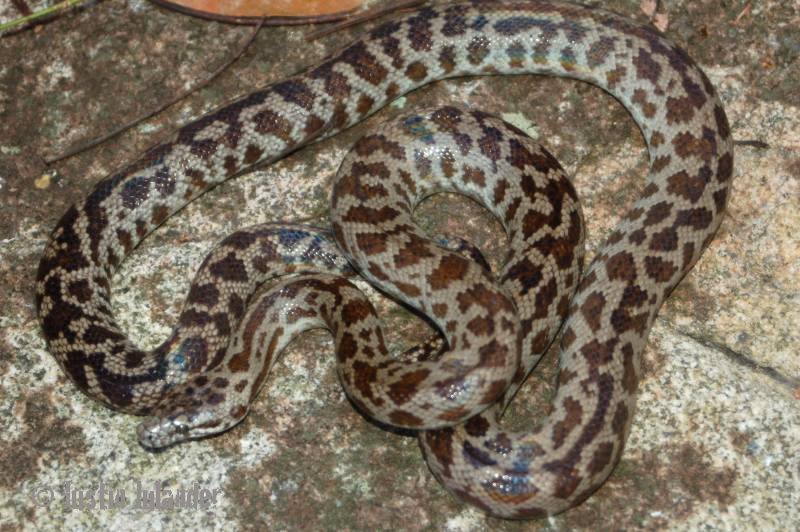 |
|
Shortly
thereafter, the lead car found a brown tree snake
(Boiga
irregularis) on the road. It was very alert and
intelligent
looking. Nice to see another snake on the road. |
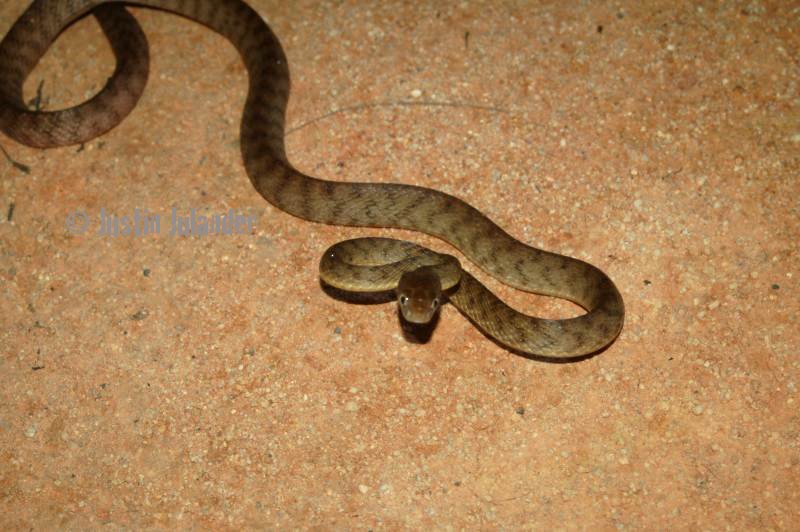 |
|
We
joined up with Michael Cermak to search for some green
tree pythons (Morelia
viridis) on a side trail
through the jungle. Unfortunately, luck was not
with us and no
green trees were found. I did happen upon a
green frog (Litoria
caerulea) in a
picture perfect pose, as well as some green python
food (a small
rodent, likely a Melomys),
and
the only Australian Ranid, a wood frog (Rana daemeli).
Despite not
finding any reptiles, the anticipation of finding an
amazing green
jewel kept the excitement levels high! We
returned to the beach
house and a nice mourning gecko (Lepidodactylus
lugubris) was cruising around the back deck
posts. |
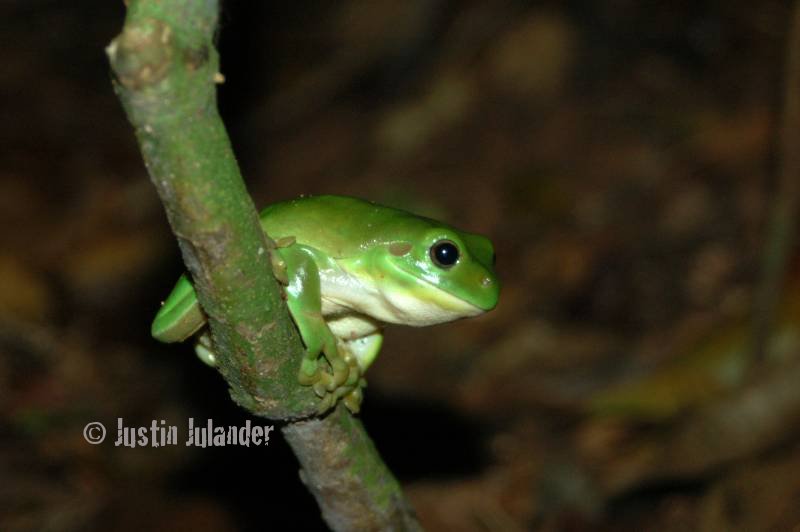 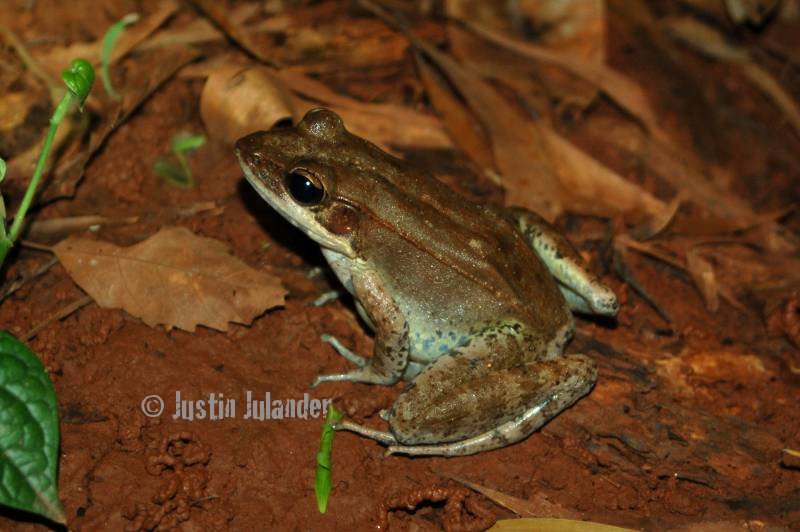 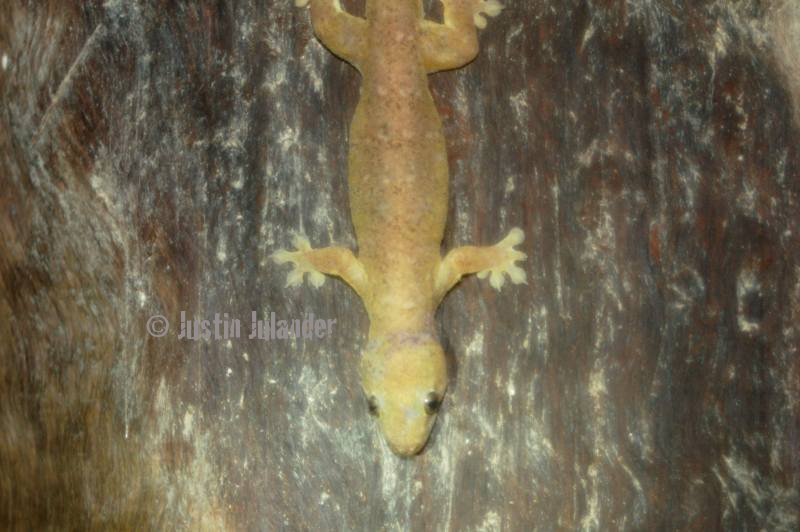 |
|
The
next day we headed out west of the park to check out
some giant
termite mounds, Queensland pitcher plants, and some
amazing ant
plants. We headed down along a small creek,
where we spotted a
couple saw shelled turtles (Elseya
latisternum) in the shallows. Allen
dove in after one,
although he had his camera in his pocket (he likes
turtles!). |
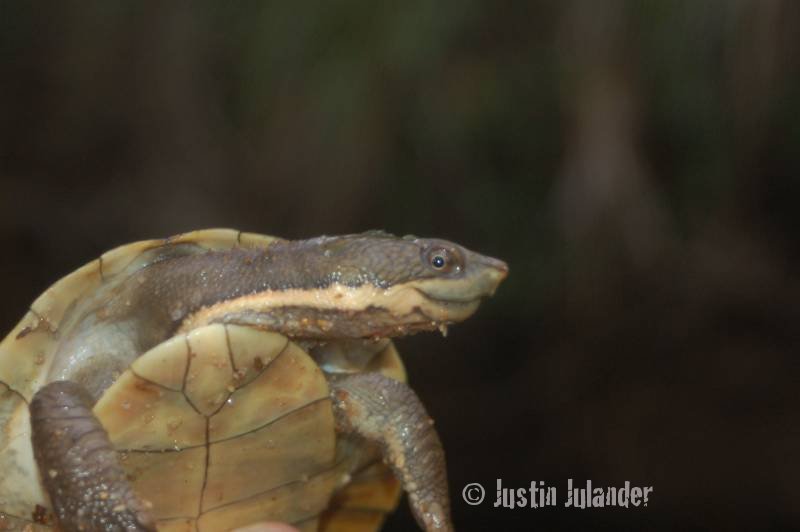 |
| Page 3,
Green Pythons
in Iron Range |